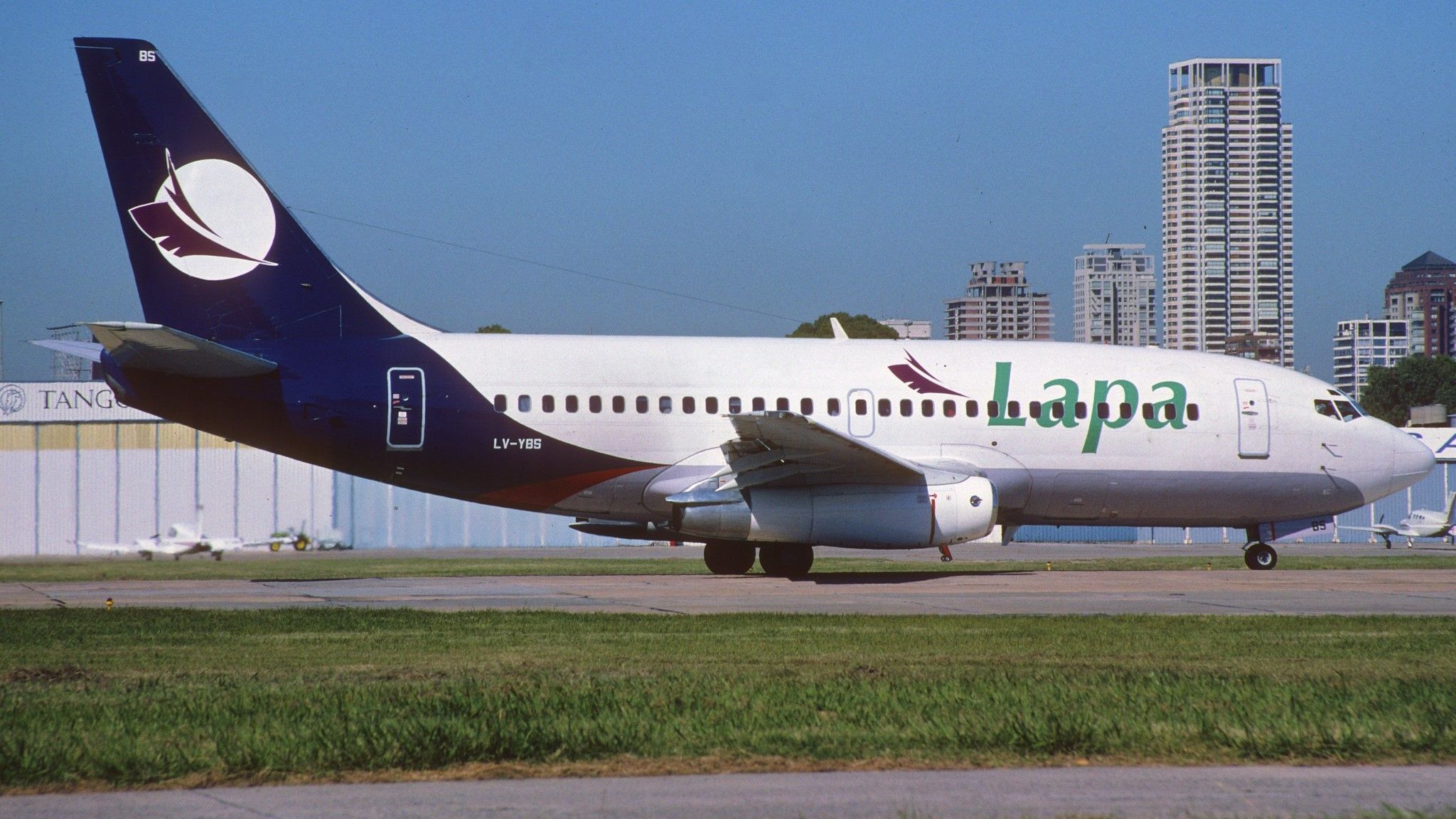Summary
- LAPA was the first private airline in Argentina, but it struggled to compete with the state carriers under government restrictions for the first 16 years.
- In the 1990s, LAPA experienced its best days, expanding its network to five foreign countries and 25 cities in Argentina.
- LAPA's demise came from two incidents - a fatal crash in 1999 due to pilot error and the economic crisis in the early 2000s.
Líneas Aéreas Privadas Argentinas, better known as LAPA, was an Argentinian carrier that existed for over a quarter of a century. It was the first private company to run domestic flights in the country, and it battled against the state operators Aerolíneas Argentinas and Austral. However, it has now been defunct for two decades, which begs the question as to what happened to the airline. Let's take a look.
The origins of LAPA
It was 1977 when LAPA first took flight. Count Claudio Zichy Thyssen created the airline in Argentina, following a long tradition of German businessmen launching carriers in South America during the 20th century. By that time, Aerolíneas Argentinas was already an established airline. The flag carrier and its domestic subsidiary, Austral, were the country's state carriers and had a monopoly in the sky.
LAPA originally intended to fly domestic routes from Buenos Aires but faced many restrictions. During the first 16 years, LAPA struggled to compete under the Argentinian government's rules. Nonetheless, by 1988, it had a domestic map of ten routes and one international flight to Punta del Este in Uruguay. It had a fleet composed of Fairchild Swearingen Metro II and Saab 340 planes.
Love aviation history? Discover more of our stories here!
In the meantime, Aerolíneas Argentinas was booming. During the 1970s and the 1980s, the national airline saw its golden age, launching flights through the South Pole and even flying aircraft from the Boeing 747 family. However, LAPA's time would eventually come, and it was in the 1990s when the airline had its highlights.
The 1990s were LAPA's best days
In 1993, the Argentinian government deregulated the airline market in the country. This decision helped LAPA grow during the decade, allowing it to compete with Aerolíneas Argentinas but with more accessible ticket prices. LAPA acquired Boeing 737-200s and 757-200s, as well as a 767-300ER that allowed the carrier to fly to the US. The longest route it ever operated was to Atlanta, starting in 1999.
During the 90s, LAPA ultimately established scheduled flights to five foreign countries in North and South America: Brazil, Chile, Bolivia, Uruguay, and the United States. It also had a domestic network of 25 cities in Argentina, as well as charter flights to nine countries across Latin America and the Caribbean.
Get the latest aviation news straight to your inbox: Sign up for our newsletters today!
LAPA's incredibly comprehensive domestic network featured flights to the likes of Cordoba, Mendoza, San Juan, San Luis, Villa Mercedes, Tucumán, Salta, Jujuy, La Rioja and Catamarca, Posadas, Iguazú, Resistencia, Corrientes, Formosa, Trelew, Comodoro Rivadavia, Rio Gallegos, Rio Grande, Ushuaia, Mar del Plata, Villa Gesell, Bahía Blanca, Neuquén, Bariloche, and General Roca.
Why did LAPA disappear?
LAPA's final nails in the coffin ultimately came in the form of two different incidents. Firstly, there was an accident involving flight 3142, which the airline operated with a Boeing 737-204C flying from Buenos Aires to Cordoba. It crashed on 31 August 1999 while attempting to take off from Aeroparque Jorge Newbery (AEP).
According to the Aviation Safety Network, 65 people died in the crash, including two on the ground. According to the statistics, a further 34 people were injured due to the accident. During the crash's investigation, researchers eventually discovered that the captain of the flight's license had expired.
The second event leading to LAPA's fall was the Argentinian economic crisis in 2001. The situation, which led to the resignation of President Fernando de la Rúa, gave way to a period of political instability with five different leaders. Therefore, the economy was terribly hurt, and LAPA ultimately wasn't able to fly through the uncertainty. It subsequently went bankrupt in 2003, bringing its story to an end.
Former fleet
Let's conclude by taking a quick look back at the different aircraft types that LAPA flew over the years. In terms of Boeing twinjets, data from ATDB.aero shows that the carrier flew 21 737-200s (of which five were the -200C model), 12 737-700s, five 757-200s, and one 767-300ER. Away from the US planemaker, LAPA also operated two BAC 111-400 jets and three NAMC YS-11A-300 turboprops.
Did you ever travel with LAPA back in the day? If so, what was it like? Let us know your thoughts and experiences in the comments!
Sources: ATDB.aero, Aviation Safety Network, FlightGlobal




